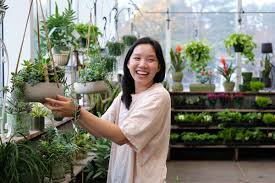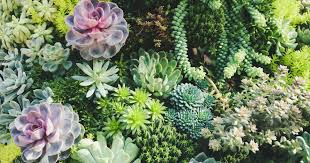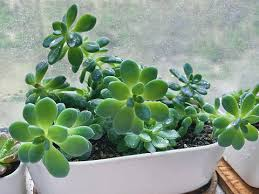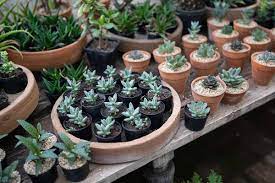Succulents, known for their easy-care nature, thrive in various environments, and a greenhouse can offer an ideal setting to cultivate them, especially in colder climates. My love for growing succulents began as a child, visiting the greenhouse atop the biology building at the College of William and Mary. It was there I saw the potential for greenhouse cultivation, even for massive varieties. While you may not want giant plants, a greenhouse provides numerous benefits for growing different succulents year-round.
Why Grow Succulents in a Greenhouse?
A greenhouse offers a controlled environment that can shield tender succulents from harsh outdoor conditions. Whether you’re propagating cuttings or overwintering frost-sensitive varieties, it allows you to maintain optimal growing conditions. While many succulents like euphorbia and sedum can tolerate cold and don’t require a greenhouse, others like kalanchoe, aloe, and haworthia are more delicate and benefit from the warmth and protection a greenhouse provides.

Ideal Succulent Varieties for Greenhouses
When choosing succulents for your greenhouse, consider their size and growing conditions. Some succulents grow too large for small greenhouses, such as sansevieria and agave. Trailing varieties like donkey’s tail and elephant bush are perfect for hanging baskets, saving space. Succulents typically require humidity levels around 40-50%. Avoid combining them with high-humidity plants unless you’re ready to maintain separate zones within the greenhouse.
Tips for Growing Succulents
Growing succulents in a greenhouse still requires attention to light, temperature, humidity, and soil conditions.
Exposure
Succulents need at least six hours of bright, indirect light each day, with some tolerance to less light during the winter. However, direct sunlight can damage them, especially variegated varieties. It’s essential to place succulents where they are shielded from intense afternoon sun, or consider using shade cloth. If natural light is insufficient, supplemental grow lights can help, particularly in winter.

Temperature
The ideal temperature for most succulents is between 70-75°F during the day and slightly cooler at night. While some varieties can tolerate broader ranges, it’s important to keep the temperature between 40°F and 80°F and adjust the greenhouse accordingly during extreme weather.
Humidity & Air Circulation
Succulents thrive in low humidity, around 40%, and excessive moisture can lead to fungal diseases and root rot. Ensure good air circulation by spacing plants at least four inches apart and draining water away from the greenhouse to avoid humid air buildup. A fan can help maintain airflow, but keep windows closed during freezing weather.

Soil and Pots
Use pots with drainage holes and well-draining soil to prevent water from accumulating around the roots, which can cause rot. A mixture designed for succulents or cacti works best. Avoid using regular garden soil, which can retain too much moisture.
Placement
Arrange your pots to give plants the light they need and prevent overcrowding. Avoid placing small pots under hanging baskets, as this can block light or cause water to drip onto plants. Ensure plants aren’t placed directly on the cold ground in winter to prevent freezing.
Overwintering Succulents in a Greenhouse
A greenhouse can protect tender succulents from freezing temperatures. Monitor the temperature closely and ensure it stays between 45-80°F. Use supplemental heat if necessary, especially in colder regions (Zones 1-7). Plants also require strong, indirect light to prevent them from becoming leggy during the winter months.
In spring, acclimate plants to outdoor conditions gradually to avoid shock. You can transition them by exposing them to outdoor temperatures for an hour, gradually increasing the exposure time each day.
Propagating Succulents
A greenhouse provides an excellent environment for propagating succulents from cuttings or leaves. The controlled temperature and bright light will boost root formation. In early spring, the greenhouse can give cuttings the warmth they need as they exit dormancy. You’ll also have the space to propagate multiple varieties at once, making it ideal for enthusiasts looking to expand their collection.
Conclusion
Whether you’re a beginner or a seasoned gardener, a greenhouse offers an excellent opportunity to grow succulents year-round, provide them with the perfect environment, and expand your propagation options. With the right conditions—proper light, temperature, humidity, and soil—your greenhouse can become the perfect home for these beautiful, low-maintenance plants. Do you have any tips or experiences growing succulents in a greenhouse? Let us know in the comments!
